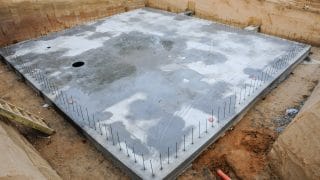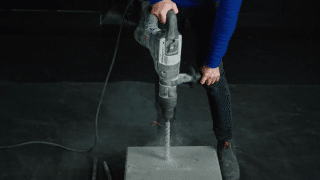The Ultimate Guide to Choosing a Hammer for Any Kind of Construction Work
Oct 13, 2020
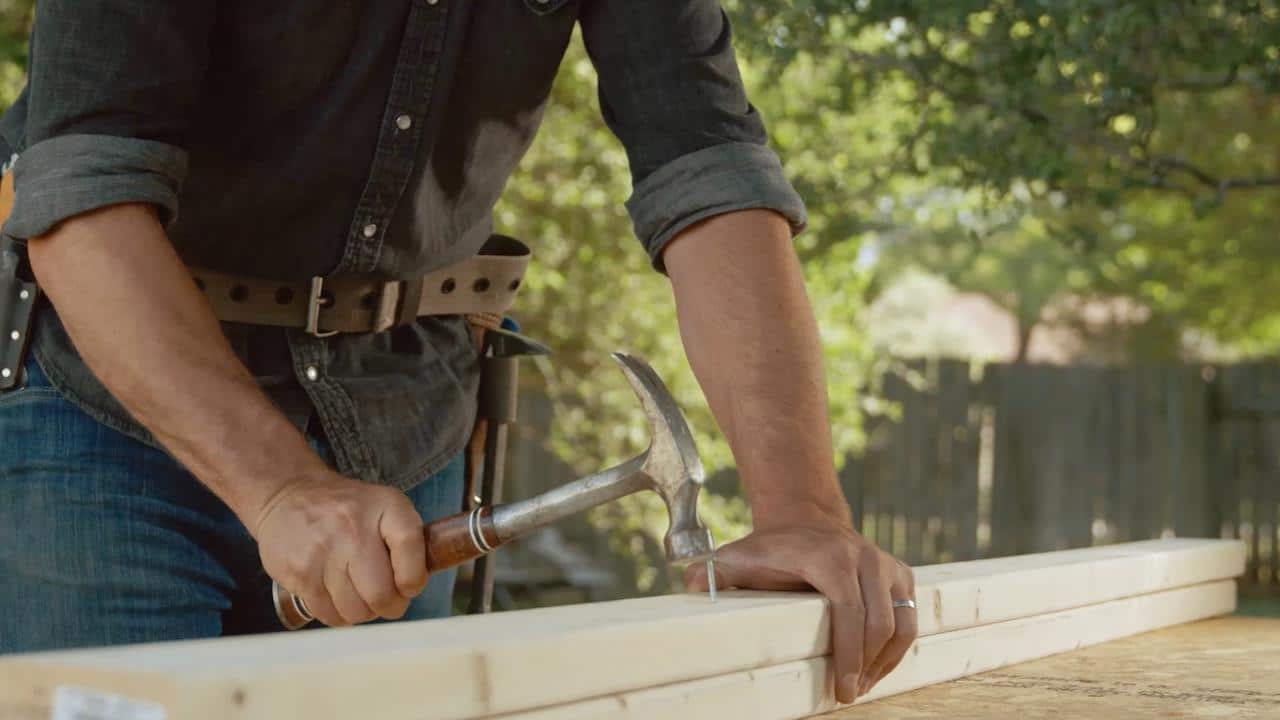
So many hand tools have been replaced by power tools in the construction industry, but hammers have remained an essential hand tool in every builder’s toolbelt. There is a vast range of hammer types specific to different types of work like framing, masonry, finish carpentry, electrical, and demo work.
Often, the type of materials that you will be working with will dictate what type of hammer you should buy, but everyone who works in construction should also own a classic claw hammer—simple, multipurpose, and handy for a variety of different building and demolition tasks.
“Anything in the construction industry is going to be powered, right? We just don’t have time to be making saw cuts with [a hand saw]. This has definitely been replaced by power tools. However, the hammer hasn’t—we still use hammers every single day. It’s probably the most reached-for tool in your tool belt.” -Jordan Smith

How to Choose a Hammer
“Don’t get the cheapest thing you can find because it’s just not going to last, but also, don’t go crazy and get the most expensive thing you can find, just because it’s expensive. Look at getting honest, good tools.” – Jordan Smith
When you’re shopping for a hammer, you’re looking for value and the best type of hammer for your work. Especially while you are beginning to figure out the best type of hammer for you, get a solid, reliable tool in the medium spending range. That way you aren’t overspending on a high end hammer that, after you’ve used it for a while, may not have the feel that you prefer. Try working with a midrange tool for a few months and take note of what features do and don’t work for you so that you know what to purchase next time.
Anatomy of a Hammer
The head type, handle type, and head weight will vary depending on the job and materials that the hammer was designed for, but the general anatomy of a hammer is pretty universal.
Parts of a hammer:
- Handle: Can be wood, metal, or fiberglass and is the part you grip to swing the hammer.
- Eye: The handle affixes to the hammerhead at the eye. If the head becomes loosened over time, this is where you will attach a new handle. Note: Forged metal hammers will not have an eye because the hammer is all one piece.
- Head: The head is what strikes the object and its weight will vary depending on the type of work being done. Heavier heads tend to be for more heavy duty jobs like framing, while lighter heads help with detailed finish work where precise control is necessary.
- Face: The face is the front of the head that makes contact with the nail or surface you are striking. It can be smooth to minimize any marring of a wood surface, or milled to help the face grab onto nailheads.
- Neck: The part of the hammer head that attaches to the handle.
- Cheek: The side of the hammer head.
- Throat: Connects the neck to the face.
- Claw: Also called the nail puller or pry bar – intentionally sharp to help you dig into the wood if needed for a stubborn nail. Note: Only claw hammers will have a claw.
A hammer is one of the most essential tools you’ll need on a construction site. Learn more about this and other important construction tools—and how to use them safely—in MT Copeland’s online class, taught by professional builder and craftsman Jordan Smith.
3 Types of Hammer Handles
The materials of hammer handles vary to adapt to the type of building job, amount of use, and the purchaser’s budget. In general, wood handles will be more affordable but won’t last as long, while metal will be more expensive but last indefinitely. The handle length will vary too—longer will give you more swing and therefore more power, while shorter will give you more control over smaller movements and detail work.
1. Wooden handle
Wood handled hammers tend to be more affordable than metal handles, but eventually the head will loosen from the handle and you’ll need to replace it. Luckily, they are easy to replace and most manufacturers sell replacement handles. If the manufacturer does not sell replacement handles, do not buy that hammer.

2. Metal handle
A metal handle, like steel or titanium, is a buy-it-once type of hammer that won’t need replacing but they are more expensive than hammers with wooden handles. Many will come with a rubber or leather wrap for grip and to absorb shock. Some metal hammers are forged in one piece so you will never replace the handle. Others have removable heads so that you can change out the head for different jobs.
3. Fiberglass handle
Fiberglass handles are lightweight and less expensive than metal, but won’t last as long and tend to splinter. While fine for DIY at home, Jordan doesn’t recommend this handle type for professional builders because it can’t withstand heavy use as well as wood or metal handles.
So many hand tools have been replaced by power tools in the construction industry, but hammers have remained an essential hand tool in every builder’s toolbelt. There is a vast range of hammer types specific to different types of work like framing, masonry, finish carpentry, electrical, and demo work.
Often, the type of materials that you will be working with will dictate what type of hammer you should buy, but everyone who works in construction should also own a classic claw hammer—simple, multipurpose, and handy for a variety of different building and demolition tasks.
“Anything in the construction industry is going to be powered, right? We just don’t have time to be making saw cuts with [a hand saw]. This has definitely been replaced by power tools. However, the hammer hasn’t—we still use hammers every single day. It’s probably the most reached-for tool in your tool belt.” -Jordan Smith

How to Choose a Hammer
“Don’t get the cheapest thing you can find because it’s just not going to last, but also, don’t go crazy and get the most expensive thing you can find, just because it’s expensive. Look at getting honest, good tools.” – Jordan Smith
When you’re shopping for a hammer, you’re looking for value and the best type of hammer for your work. Especially while you are beginning to figure out the best type of hammer for you, get a solid, reliable tool in the medium spending range. That way you aren’t overspending on a high end hammer that, after you’ve used it for a while, may not have the feel that you prefer. Try working with a midrange tool for a few months and take note of what features do and don’t work for you so that you know what to purchase next time.
Anatomy of a Hammer
The head type, handle type, and head weight will vary depending on the job and materials that the hammer was designed for, but the general anatomy of a hammer is pretty universal.
Parts of a hammer:
- Handle: Can be wood, metal, or fiberglass and is the part you grip to swing the hammer.
- Eye: The handle affixes to the hammerhead at the eye. If the head becomes loosened over time, this is where you will attach a new handle. Note: Forged metal hammers will not have an eye because the hammer is all one piece.
- Head: The head is what strikes the object and its weight will vary depending on the type of work being done. Heavier heads tend to be for more heavy duty jobs like framing, while lighter heads help with detailed finish work where precise control is necessary.
- Face: The face is the front of the head that makes contact with the nail or surface you are striking. It can be smooth to minimize any marring of a wood surface, or milled to help the face grab onto nailheads.
- Neck: The part of the hammer head that attaches to the handle.
- Cheek: The side of the hammer head.
- Throat: Connects the neck to the face.
- Claw: Also called the nail puller or pry bar – intentionally sharp to help you dig into the wood if needed for a stubborn nail. Note: Only claw hammers will have a claw.
A hammer is one of the most essential tools you’ll need on a construction site. Learn more about this and other important construction tools—and how to use them safely—in MT Copeland’s online class, taught by professional builder and craftsman Jordan Smith.
3 Types of Hammer Handles
The materials of hammer handles vary to adapt to the type of building job, amount of use, and the purchaser’s budget. In general, wood handles will be more affordable but won’t last as long, while metal will be more expensive but last indefinitely. The handle length will vary too—longer will give you more swing and therefore more power, while shorter will give you more control over smaller movements and detail work.
1. Wooden handle
Wood handled hammers tend to be more affordable than metal handles, but eventually the head will loosen from the handle and you’ll need to replace it. Luckily, they are easy to replace and most manufacturers sell replacement handles. If the manufacturer does not sell replacement handles, do not buy that hammer.

2. Metal handle
A metal handle, like steel or titanium, is a buy-it-once type of hammer that won’t need replacing but they are more expensive than hammers with wooden handles. Many will come with a rubber or leather wrap for grip and to absorb shock. Some metal hammers are forged in one piece so you will never replace the handle. Others have removable heads so that you can change out the head for different jobs.
3. Fiberglass handle
Fiberglass handles are lightweight and less expensive than metal, but won’t last as long and tend to splinter. While fine for DIY at home, Jordan doesn’t recommend this handle type for professional builders because it can’t withstand heavy use as well as wood or metal handles.
Hammer Face: Milled vs Smooth
Although the exact shape of the face of each type of hammer will vary, it’s important to know the difference between a milled face or hammer face, especially if you are doing carpentry work. A milled face, also called a waffle head, has a pattern milled into the hammer face designed to bite into nails and hold a metal-on-metal grip without slipping.
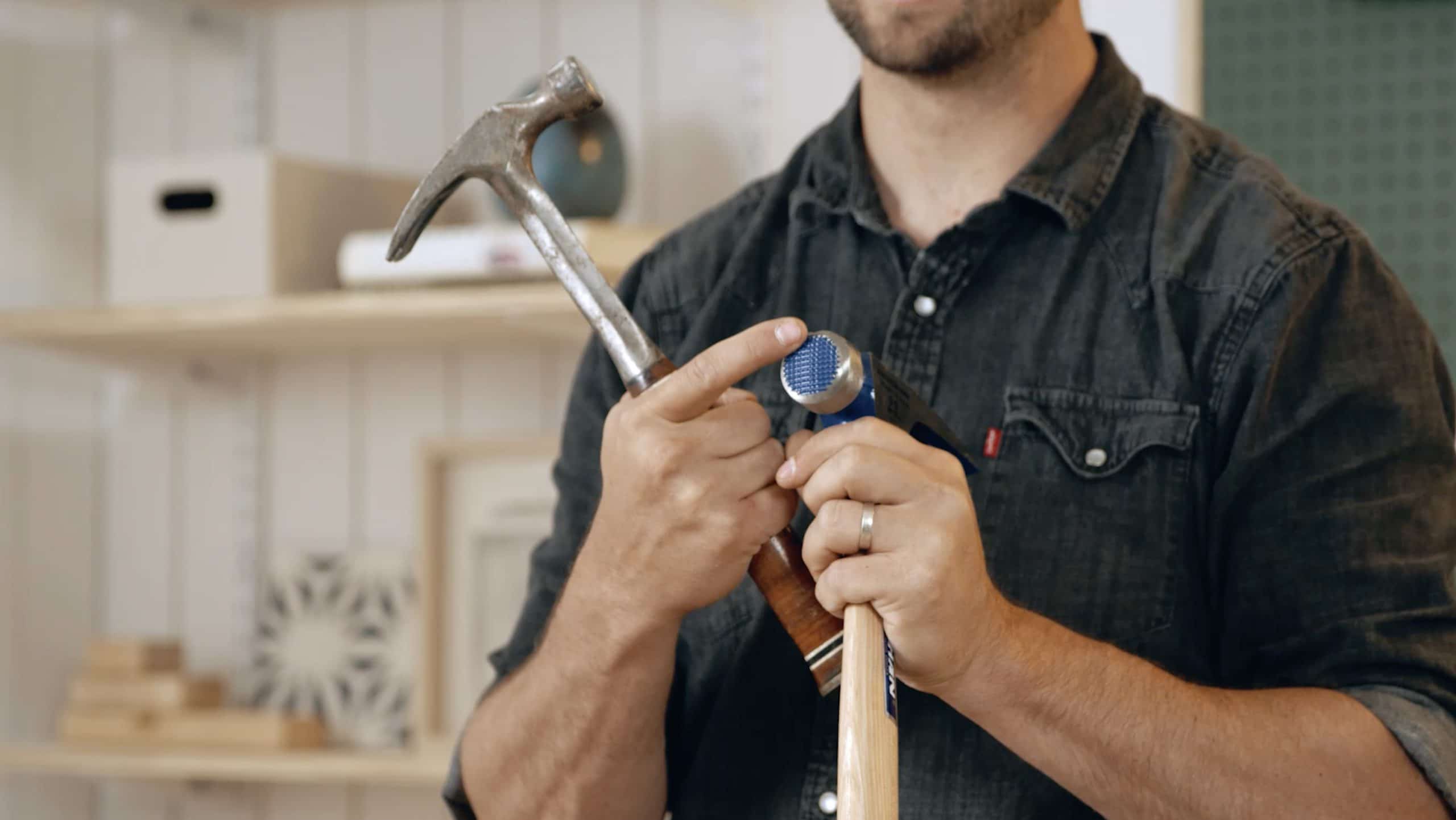
It’s great for driving in nails, framing, and nailing in overhead where extra grip onto the nailhead makes it safer to work. However, the milled face will leave a pattern on the wood surface, so it is not appropriate for finish work.
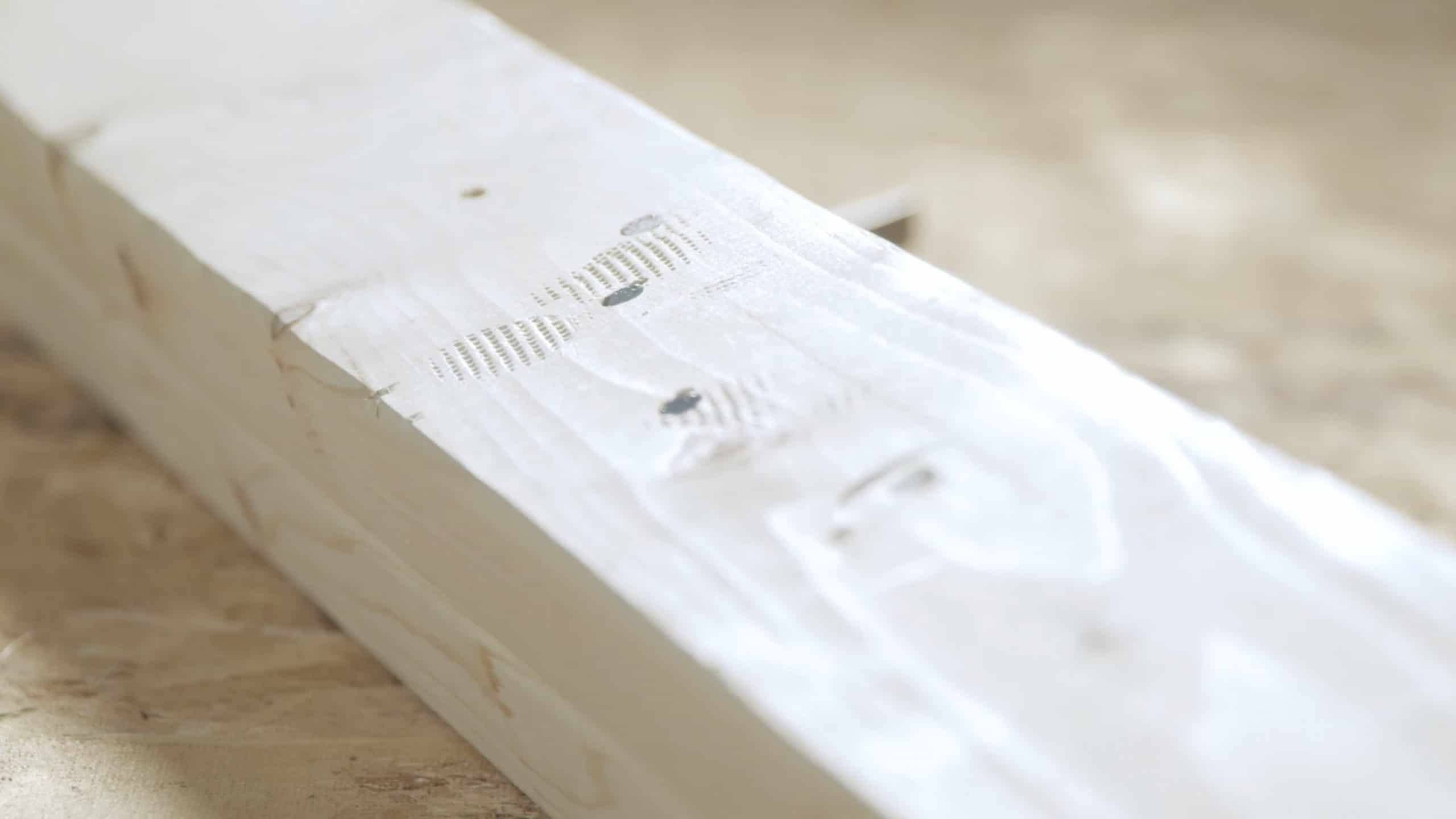
On the other hand, a smooth face is important for finish work such as any carpentry where the wood will be showing (think: cabinetry, trim, and flooring). If the hammer face strikes the wood it will not leave any markings on the wood. It will not grip as firmly to the nail head but it is easier to place for smaller, lighter movements and hammering.
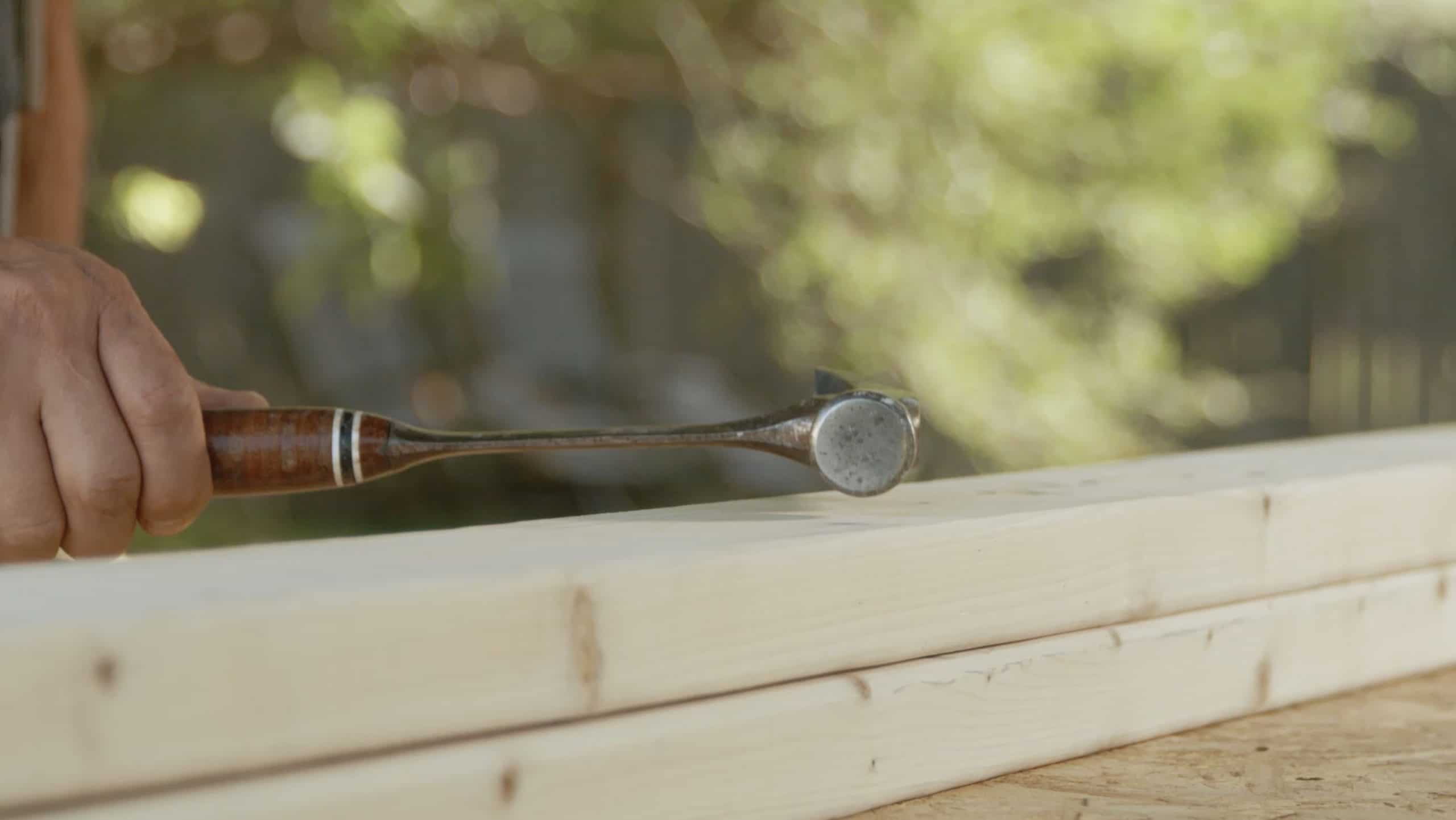
Common Hammer Types for Carpentry, Masonry, and Metalwork
There are dozens of different hammer types for nearly every profession in the building trades. Each is designed to work with a specific material like wood, metal, brick, or drywall and to deliver a specific movement. The claw hammer will always remain a classic and essential tool for any general contractor, but there are also essentials for carpentry, masonry, metalwork, and more. Whatever hammer type you buy, Jordan recommends you use it for 6 months to figure out what features you really need, then spend the money to get what you want.
Best Hammers for Carpentry
- Finish Hammer: Whereas rough carpenters, also known as framers, build the structures of a house, finish carpenters focus on the numerous details that complete the home. Because the work they do is finer, finish carpentry hammers are lighter weight and smaller in overall size. They also have a smooth face that won’t mar the wood surface. They can be used for light duty framing in a pinch, but aren’t going to get a good bite into the nail.
- Framing hammer: A framing hammer will have a longer handle, more swing, and a heavier head than a trim carpentry hammer and a milled face for better nail grip. It can also have a magnetic edge on the head that allows you to hold and start a nail in with one swing, and then come back to drive it in. This is especially important when you are driving nails overhead because it allows you to keep one hand on the ladder. A curved claw is standard for ripping out nails, or you can opt for a straight claw (also known as a rip hammer) which provides more leverage for pulling apart wood.
Learn professional builder and craftsman Jordan Smith’s recommendations for the best hammer for framing—and other essential construction tools—in MT Copeland’s online course on Hand Tools.
Best Hammers for Masonry
- Club Hammer: A club hammer is essential for those doing masonry work and serves many purposes. It is like a mini sledgehammer (about 3-5 pounds) that is great for delivering precise but heavy blows, driving masonry nails, driving chisels, and can also be used for demo work.
- Brick hammer: The name “brick hammer” (also called a masonry hammer) is pretty straightforward—this hammer is specifically designed to split and score bricks. Instead of a claw on the back end of the head, it has a chisel for chipping and splitting masonry materials.
Best Hammers for Metalwork
- Ball peen hammer: A ball peen hammer (you’ll also see it spelled “ball pein”) has a rounded ball peen on one instead of a claw. The face is harder than a claw hammer and can pound chisels and set rivets without cracking. They range in weight and size and while you might think the heavier the better, smaller ball peen hammers are better for shaping metal.
- Blocking hammer: A blocking hammer is like the finish hammer of metal work. It has a large flat surface for shaping sheet metal and leaving behind an unmarred surface. If you work shaping aluminum and steel, you will likely need this hammer.
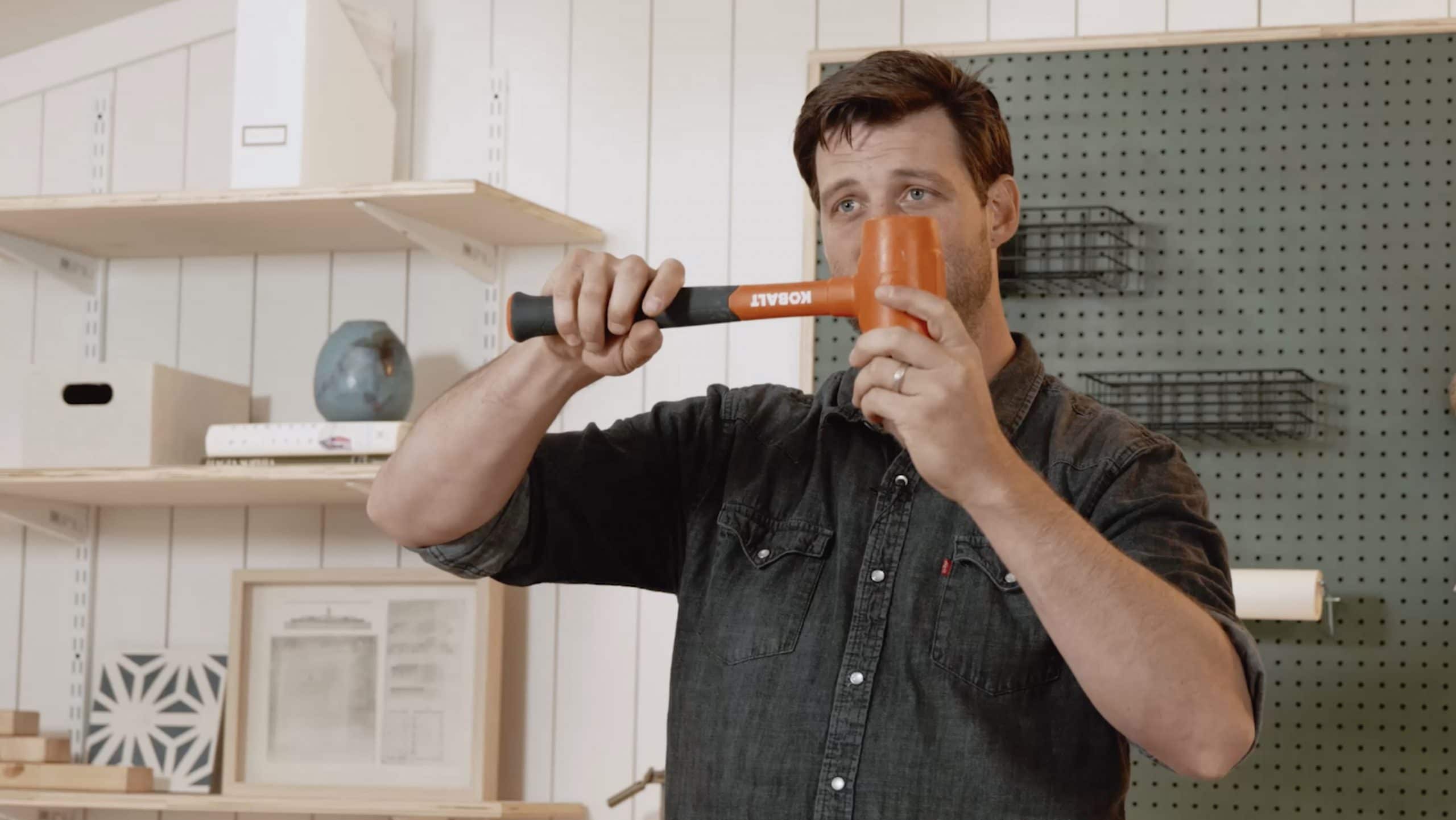
Other Types of Specialty Hammers
- A dead blow hammer is a specialized type of sledgehammer good for demo work where you need to cause minimal damage.
- Use an upholstery hammer (also called a tack hammer) to hammer in the small nails and tacks that go into finishing furniture. These have largely been replaced by staple guns but are more precise and easier to control.
- A cross peen hammer has a wedge instead of a claw that is ideal for hammering in small nails or tacks without hitting your fingers. Handy for finish work.
- A drywall hammer has a blade instead of a claw that can be used to cut off excess drywall (also called a drywall axe because of the blade).
- A scaling hammer looks more like a pick than a hammer and is used to scale rust, corrosion, and other hard coatings.
- The power hammer (also known as a nail gun) has taken over much of the work of a hammer but it only works for putting in nails quickly.
MT Copeland offers video-based online classes that give you a foundation in construction fundamentals with real-world applications. Courses include professionally produced videos taught by practicing craftspeople, and supplementary downloads like quizzes, blueprints, and other materials to help you master the skills.





